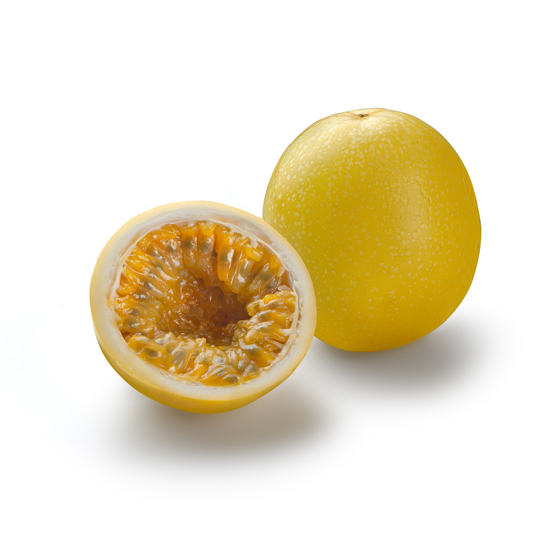Storage advice
You can store the EAT ME maracuja for longer if it is kept outside the fridge. Pay attention to the condition of the skin.
The lesser-known sister of passion fruit

The maracuja has a family member that is much more familiar: the passion fruit. The granadilla is also part of the same family. The maracuja can be recognised thanks to its yellow-green skin and oval shape. When sliced open, the similarity with the other two family members is obvious. Inside the maracuja you will find yellow-orange pulp, full of small edible seeds. But, contrary to many other fruits, don't discard the seeds as they are the real treat here.
If passion fruit is too sweet for your liking, maracuja is a tasty alternative. Still sweet, but with a little more tang. The skin indicates how ripe the fruit is. The fruit tastes at its best when the skin is wrinkled. Preferably buy the maracuja while the skin feels firm and is not too wrinkled. Do not wait too long before eating as the fruit dries out quickly.
You can use maracuja in the same way as a passion fruit in the kitchen. Of course, it's very tempting just to spoon out the flesh and enjoy, but what about making a maracuja mocktail or the exotic partnership of mango and maracuja? And maracuja is a fabulous ingredient in homemade ice cream.
Simply slice the fruit in half and scoop out the flesh with a spoon. You can also cook the fruit. The tough skin is inedible.


You can store the EAT ME maracuja for longer if it is kept outside the fridge. Pay attention to the condition of the skin.
Feel free to bite into a maracuja more often, if you also like to eat consciously. The fruit is a source of an essential building block in our body, vitamin C. It is known to be the vitamin that activates the natural energy in our body. That way that maracuja tastes even better!
The maracuja is an exotic fruit from South America, where the fruit is grown in countries such as Colombia, Ecuador and Peru. The special thing about a maracuja tree is that it bears fruit all through the season, starting 6-7 months after planting. By this time the trees are quite sizeable - up to a few metres high. As soon as the fruit turns from green to yellow on the tree, the growers start harvesting.
